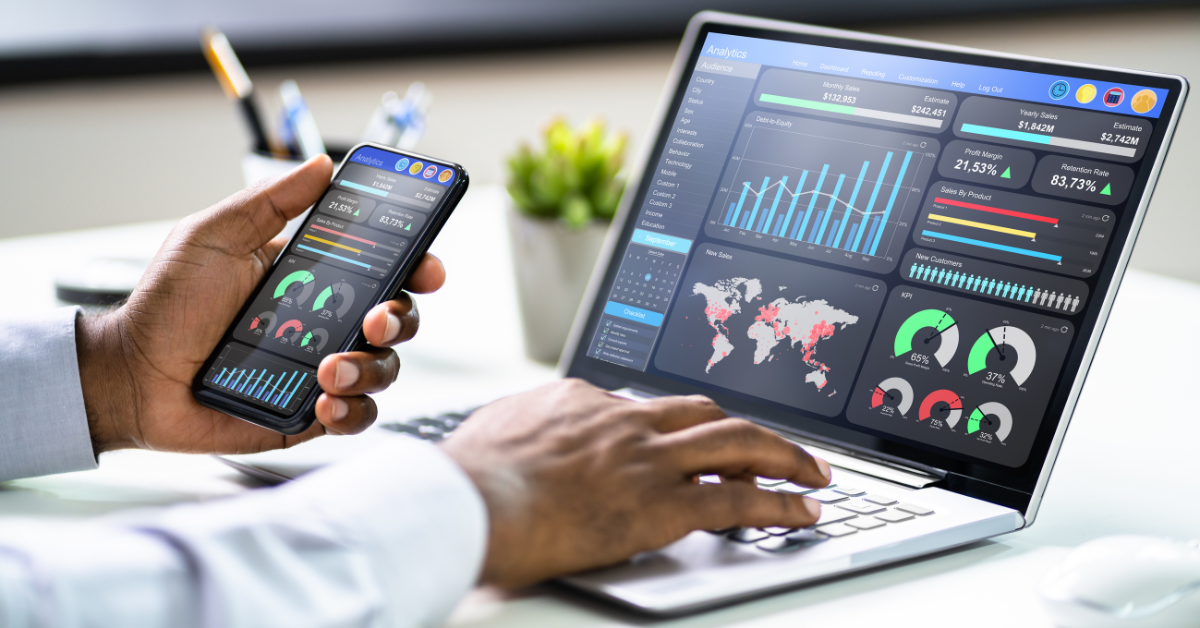Google Maps SEO is the practice of optimizing your business’s online presence to rank higher on Google Maps. This means that when someone searches for a local business on Google Maps, your business appears higher in the search results. Ranking higher on Google Maps is important because it can help increase your visibility, drive more traffic to your website, and ultimately, attract more customers to your business.
Google Maps is a powerful tool for businesses to attract more customers and improve their local search visibility. However, with so many businesses competing for the top spot, it can be challenging to rank higher on Google Maps. In this article, we’ll explore 15 tips that can help you improve your Google Maps ranking with optimization hacks. We spoke to small business owners and experienced search engine optimizers to understand how they crush the Google Maps SEO game. By implementing effective SEO practices, you can increase your chances of ranking higher in Google Maps and attracting more local customers.
What are the most effective ways to rank higher on google maps?
1. Optimize Your Google My Business Listing
One of the most important steps in Google Maps SEO is optimizing your Google My Business (GMB) listing. Your GMB listing is what appears when someone searches for your business on Google Maps. Here are some tips for optimizing your GMB listing:
– Claim your listing: Make sure you claim your GMB listing so that you can manage your business information and respond to customer reviews.
– Verify your listing: Google requires you to verify your listing to ensure that you are the owner or authorized representative of the business.
– Provide accurate and complete information: Make sure you provide accurate and complete information about your business, including your business name, address, phone number, website, and hours of operation.
– Choose the right categories: Choose the most relevant categories for your business to ensure that you appear in the right search results.
– Add photos and videos: Adding high-quality photos and videos to your GMB listing can help increase engagement and attract more customers to your business.
2. Local Citations
Local citations refer to mentions of your business’s name, address, and phone number (NAP) on other websites, such as directories, social media platforms, and review sites. Local citations are important for Google Maps SEO because they help establish the credibility and authority of your business. Here are some tips for getting local citations:
– List your business in online directories: List your business in popular online directories such as Yelp, Yellowpages, and TripAdvisor.
– Create social media profiles: Create profiles for your business on popular social media platforms like Facebook, Twitter, and Instagram.
– Get listed in industry-specific directories: Get listed in directories that are specific to your industry, such as local chamber of commerce websites or trade association directories.
3. Reviews and Ratings
Reviews and ratings on Google Maps and other review sites are important for Google Maps SEO because they can affect your business’s visibility and credibility. Here are some tips for getting more reviews and responding to them:
– Encourage customers to leave reviews: Ask your customers to leave reviews on Google Maps and other review sites.
– Make it easy for customers to leave reviews: Include links to your business’s review pages on your website and in your email signature.
– Respond to reviews: Respond to both positive and negative reviews in a timely and professional manner. Thank customers for positive reviews and address any concerns raised in negative reviews.
4. On-Page SEO
On-page SEO refers to the optimization of your website’s content and structure to improve its ranking on search engines. Here are some tips for on-page SEO for Google Maps:
– Optimize your website for local keywords: Use keywords that are relevant to your local area in your website’s content and metadata.
– Add location-specific content: Create content that is specific to your local area, such as blog posts or pages about local events.
– Optimize meta tags: Use relevant and descriptive meta tags, including title tags and meta descriptions, to help search engines understand the content of your website.
5. Backlinks
Backlinks are links from other websites to your website. Backlinks are important for Google Maps SEO because they help establish the authority and credibility of your website. Here are some tips for getting backlinks:
– Create high-quality content: Create content that is informative, interesting, and relevant to your target audience. This can help attract backlinks from other websites.
– Reach out to other websites: Reach out to other websites in your industry or local area and ask them to link to your website.
– Guest post on other websites: Offer to write guest posts for other websites in your industry or local area. This can help you get backlinks and also increase your visibility.
6. Social Media
Social media can be a powerful tool for local SEO because it can help you connect with your target audience and build your online presence. Here are some tips for using social media for local SEO:
– Create profiles on relevant platforms: Create profiles on social media platforms that are relevant to your business and your target audience.
– Share local content: Share content that is relevant to your local area, such as news about local events or promotions at your business.
– Engage with your audience: Respond to comments and messages on your social media profiles and engage with your audience to build relationships and increase your visibility.
7. Mobile Optimization
Mobile optimization involves optimizing your website for mobile devices, such as smartphones and tablets. Mobile optimization is important for local SEO because a large percentage of local searches are performed on mobile devices. Here are some tips for optimizing your website for mobile:
– Use a responsive design: Use a responsive design that adjusts to the size of the user’s device to ensure that your website looks good on any device.
– Optimize your website’s loading speed: Reduce your website’s loading speed to ensure that it loads quickly on mobile devices.
– Use mobile-friendly navigation: Use navigation that is easy to use on a mobile device, such as a hamburger menu.
8. Google Posts
Google Posts are a feature of Google My Business that allows you to create short posts that appear on your Google My Business listing. Google Posts are important for local SEO because they can help increase your visibility and attract more customers to your business. Here are some tips for creating Google Posts:
– Keep your posts short and to the point: Google Posts have a limit of 300 words, so make sure your posts are concise and easy to read.
– Use high-quality images: Use high-quality images to make your posts more visually appealing.
– Include a call-to-action: Include a call-to-action in your posts to encourage users to take action, such as visiting your website or making a purchase.
9. Local Events
Hosting or participating in local events can be a powerful way to increase your visibility and attract more customers to your business. Here are some tips for creating and promoting local events:
– Partner with other local businesses: Partner with other local businesses to create joint events or promotions.
– Use social media: Use social media to promote your event and encourage people to RSVP.
– Offer incentives: Offer incentives for people to attend your event, such as discounts or freebies.
– Follow up after the event: Follow up with attendees after the event to thank them for attending and encourage them to visit your business.
10. Google Maps Ads
Google Maps Ads are a type of online advertising that allows you to promote your business on Google Maps. Google Maps Ads are important for local SEO because they can help increase your visibility and attract more customers to your business. Here are some tips for creating Google Maps Ads:
– Set up a Google Ads account: You need a Google Ads account to create Google Maps Ads.
– Choose your campaign type: Choose the “Local” campaign type to create Google Maps Ads.
– Set your targeting options: Choose your targeting options, such as location, keywords, and ad format.
– Create your ad: Create your ad using high-quality images and a strong call-to-action.
11. Track Your Results
Tracking your results is important for Google Maps SEO because it can help you understand what is working and what is not, and make adjustments accordingly. Here are some tips for tracking your results:
– Use Google Analytics: Use Google Analytics to track your website traffic and other important metrics.
– Use Google My Business Insights: Use Google My Business Insights to track how customers are finding your business and what actions they are taking.
– Monitor your reviews: Monitor your reviews on Google Maps and other review sites to see what customers are saying about your business.
– Adjust your strategy: Use the data you collect to adjust your Google Maps SEO strategy and improve your results over time.
FAQ on Google maps
Q1: Why is ranking higher on Google Maps important for small businesses?
A1: Ranking higher on Google Maps is crucial for small businesses as it enhances online visibility, making it easier for potential customers to find your business. This visibility can lead to increased foot traffic, phone inquiries, and overall business growth.
Q2: What factors influence the ranking on Google Maps?
A2: Several factors impact your Google Maps ranking, including the accuracy of business information, online reviews, local relevance, and the overall engagement with your business profile. Optimizing these elements can significantly improve your position on the map.
Q3: How can I ensure accurate business information on Google Maps?
A3: To ensure accuracy, claim and verify your Google My Business listing. Provide detailed and up-to-date information, including your business hours, contact details, and a concise business description. Regularly review and update this information as needed.
Q4: What role do customer reviews play in Google Maps ranking?
A4: Customer reviews heavily influence your ranking. Encourage satisfied customers to leave positive reviews, respond promptly to any negative feedback, and strive to maintain a high overall rating. Google values businesses with a positive reputation.
Q5: Is having a mobile-friendly website important for Google Maps ranking?
A5: Yes, a mobile-friendly website is crucial. Google prioritizes mobile-friendly businesses, considering the prevalence of mobile searches. Ensure your website is responsive and provides a seamless experience for users on various devices.
Q6: How can I improve local relevance for Google Maps ranking?
A6: Optimize your website and content for local keywords relevant to your business. Foster local partnerships, participate in community events, and ensure that your business is accurately categorized on Google My Business.
Q7: Does having photos on my Google My Business profile impact ranking?
A7: Yes, visual content is essential. Regularly upload high-quality photos showcasing your business, products, and services. This not only enhances your profile but also attracts potential customers and positively influences your ranking.
Q8: Can social media activity affect my Google Maps ranking?
A8: While social media signals don’t directly impact Google Maps ranking, a strong social media presence can contribute to overall online visibility. Share updates, engage with your audience, and provide links back to your website for a comprehensive online strategy.
Q9: How frequently should I update my Google My Business listing?
A9: Regular updates are beneficial. Keep your business information, such as operating hours and contact details, accurate. Additionally, post updates, events, and promotions to keep your audience engaged and informed.
Q10: Are there any penalties for violating Google Maps guidelines?
A10: Yes, violating Google Maps guidelines can lead to penalties, including a drop in ranking or suspension of your business listing. Familiarize yourself with the guidelines and ensure compliance to maintain a favorable position on Google Maps.




